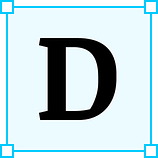The use of participative & qualitative methodologies to learn from users’ experiences in a social project
In this article, I share the methods, tools, and learnings that could be applied in UX research.
 Doctors of the World Spain have been developing a program on Female Genital Mutilation (FGM) for almost 20 years. Last year I worked for them as a researcher, conducting participative and qualitative methodologies to learn from their project’s participants on FGM. The aim of this research was to reflect on their process and learn from their participants’ (users’) experiences by identifying good practices, lessons learned, and formulating recommendations for the next steps.
Doctors of the World Spain have been developing a program on Female Genital Mutilation (FGM) for almost 20 years. Last year I worked for them as a researcher, conducting participative and qualitative methodologies to learn from their project’s participants on FGM. The aim of this research was to reflect on their process and learn from their participants’ (users’) experiences by identifying good practices, lessons learned, and formulating recommendations for the next steps.
In order to achieve this goal, our team decided to conduct a systematization of experience. This methodology is used with the aim of improving practices based on a critical reflection and interpretation of lessons learned from that practice (Jara, O; 2012). However, it doesn’t end there as it can be used as a tool to conceptualize how an initiative it’s performed, what results have been achieved, and why some outcomes have occurred over others.
As in UX research, the aim is to learn from our users, adapt our services or products to their needs, and identify what can be improved in order to solve their problems.
The context:
Female genital mutilation (FGM) refers to all procedures involving partial or total removal of the female external genitals or other injury to the female genital organs for non-medical reasons. Numerous factors contribute to the prevalence of this practice. Yet in every society in which it occurs, FGM is a manifestation of entrenched gender inequality (UNICEF). FGM violates women’s and children’s human rights, including their rights to health, to be free from violence, to life and physical integrity, to non-discrimination, and to be free from cruel, inhuman, and degrading treatment (HRW).
In this context, Doctors of the World Spain has been carrying out projects in different cities and countries since 2001.
The process:
1. Documentation collection & analysis
First of all, in order to know the scope of the program, validate and contrast information from users I gathered all the available organization documentation on FGM from different departments, projects, and locations.
In total, I handled information on FGM projects, developed in 3 countries and 11 locations in Spain over the last 19 years.
2. Experience reconstruction
Once the scope of the program was identified, with the aim of reconstructing the experience and gathering users’ knowledge, I defined the interviewees’ profile and identified possible key informants.
Systematization of experience is considered a Participatory Action Research. This approach originated in Latin America, with the purpose of promoting the participation of people from popular sectors in the analysis of their own reality, and promoting social transformation (Jara, O; 2012). As a researcher, your decisions and solutions have implications. By selecting a certain approach you are making a methodological and theoretical decision, but also one that is ethical and political.
Methodologies:
- In-depth interviews:
52 interviews were carried out in 3 months. Participants were selected following a Human Rights Approach structure of rights-holders and different classifications of duty-bearers. This allowed us to include different voices and perspectives in the research.
- Participative workshops:
Different workshops were carried out in order to get insight from participants, promoting collaboration, facilitating debate, and experiencing exchange. After conducting personal interviews and getting information from their individual experience, it was important to reconstruct the process as a group. The discourse was constructed collectively, which drove discussions, exchange perspectives, and experiences.
3. Reconstruction & critical interpretation of the experience
Once the fieldwork was done and the interviews were transcribed, I proceeded with the data analysis. The subject knowledge of each user is conceived as a product of the lived experience during the developing process of the FGM program.
In this phase, the goal was to turn the experience into the subject of the study in order to interpret it critically and objectify it.
Tools used:
- Trint: I used Trint to transcribe 52 interviews, which use AI to convert recorded audio and video to text with high accuracy rates, and saved me hours of transcription.
- Atlas.ti: It is a tool primarily used for performing qualitative data analysis, where researchers apply codes to collections of unstructured text, providing functionality for identifying and visualizing content that can be used for basic text analysis. I used it to codify transcribed interviews, visualize the interrelation between codes or to easily access verbatim and quotes.
The results:
1. The experience of the organization systematized
With all the information from the users and documents, it was possible to identify different phases by milestones, analyzing its causes, the context, and contrasting its development with the organization's mission, vision, and strategy, uncovering the program’s evolution logic.
2. Identified good practices, lessons learned, challenges, and recommendations.
“Good practice” was defined as a practice mentioned by at least 4 users, then it needed to be validated by an expert group (intercultural mediators and FGM experts) by rating these practices following the evaluation criteria. Those practices that met the requirements are those that finally made it into the report.
Finally, the report presents good practices identified, its descriptions followed by its results, and lessons learned. At the end of the report, challenges, and recommendations for the organization and duty-bearers were identified.
Learnings:
User participatory research it’s a great method for understanding the needs of a target audience creating high quality, well-designed solutions to meet their needs. Social research methodologies combined with an HCI and a design thinking provide designers with a framework that facilitates tailored solutions for users and promote seamless, frictionless user experience.
My personal takeaways from this project are:
- Importance of empathy: Each person and each interview are different. You need to learn to read people by their body language, voice tone, phase, etc. If the participant looks nervous just try to slow down the conversation, follow the dialogue, and try to make them see that their opinion is valuable and that there are no correct answers. I always start from the most general topic and then start going deeper. Try to avoid forcing topics or drastic changes, just follow the conversation and ask when something interesting comes up. In order to uncover the whys just ask changing their words as a confirmation, that will invite them to keep talking about it. I don’t think that it’s necessary to force the 5 whys, do it subtly, you need to understand them by guiding the conversation and uncover their motivations, needs, goals, and frustrations.
- Learn from different cultures before your interviews: I’m not going to address FGM here and its cultural factors. I want to point out that it’s important to understand and respect others’ cultures when interviewing them. Not only to carefully chose your words, to use an inclusive language but also to know what kind of physical behaviors can make them feel uncomfortable like how to greet, stare at their eyes, etc. You must know that even affirmative head movements could mean the opposite in other cultures, so it’ important to do your homework before an interview.
- Get to know other life stories and listen without prejudice: In each interview, you have the opportunity not only to understand the user but also to grow as a person. You have a unique chance to learn from other people’s stories, their culture, their perspectives and point of view, etc. It’s all about listening, use silence wisely, just try to understand your interviewee, and make them feel comfortable as they are making an effort and sharing with you their story.
- Social sciences and UX: As you can see, social sciences are connected with user experience design in many ways. Both fields use qualitative and quantitative methodologies to learn from their users. Understanding the social aspects, constraints, or structural problems helps you to understand better your users, their context, and therefore, the use of the product or service that you are studying. Through social research, we approach people from diverse backgrounds, social statuses, and cultures, this process makes us get used to understanding others and explain their behavior.
